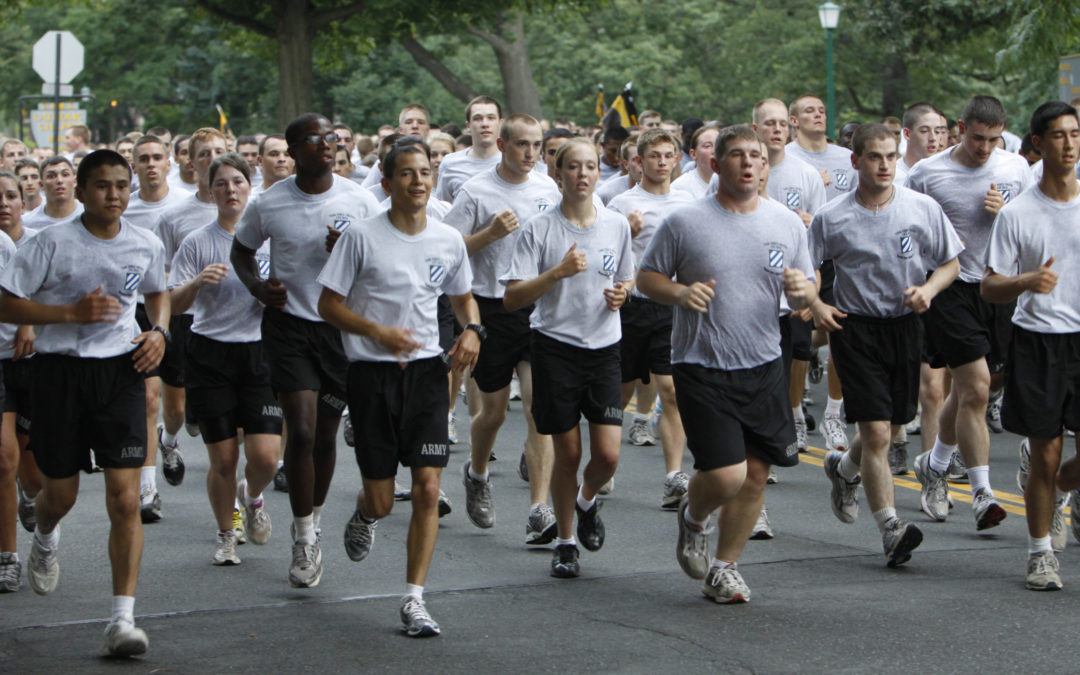Assessment of Free-Living Cadence Using ActiGraph Accelerometers Between Individuals With and Without Anterior Cruciate Ligament Reconstruction
Lisee CM, Montoye AHK, Lewallen MF, Hernandez M, Bell DR, & Kuenze CM. J Athl Train. 2020 55(9): Online ahead of print. doi: 10.4085/1062-6050-425-19.
Take-Home Message
On average, someone with an ACL reconstruction takes ~1,600 fewer daily steps and spends ~43 minutes less time moving at a moderate to vigorous pace (>100 steps/min) than healthy participants.
Summary
Someone with an ACL injury has an increased risk of persistent pain, decreased quality of life, and possible decreases in physical activity that worsen as knee osteoarthritis progresses. Walking speed measured in a clinic is a valuable assessment – proposed to be the 6th vital sign – that may help predict who is at risk for poor outcomes like osteoarthritis. If we could measure walking speed in the real world, it may be more insightful than a clinical assessment; however, we know very little about free-living walking speed after an ACL reconstruction. These researchers used an accelerometer (Actigraph) to compare step counts, cadence, and time in faster cadence among 57 participants with an ACL reconstruction within the prior 5 years to 42 healthy participants without a prior ACL injury. Participants wore the accelerometer for 7 days. The authors calculated the fastest 1-minute cadence during the week and the time spent at different cadences (e.g., slow walking, brisk walk). On average, someone with an ACL reconstruction took ~1,600 fewer daily steps and spent ~43 minutes less time moving at a moderate to vigorous pace (>100 steps/min) than healthy participants. The ACL reconstruction group also reported less knee function (IKDC scores) and peak level of physical activity (Tegner Activity Scale scores).
Viewpoints
People with a history of unilateral ACL reconstruction are slightly less active regarding steps and cadence than healthy people. Given the research study’s design, it would be interesting to see whether physical activity related to the patient-reported outcomes. A prospective study may clarify if joint symptoms cause changes in activity levels and/or if activity levels contribute to worsening symptoms. An advantage of the current study is that the authors relied on metrics that may be easy to collect with a person’s phone or commercial fitness trackers. In the coming years, clinicians may increasingly engage with patients through mobile applications to collect patient-reported outcomes and real-world functional assessments to identify people at risk for poor outcomes. In the meantime, we need to pay attention to the difference in walking speed that we see after an ACL reconstruction. Furthermore, we should try to determine and address the physical and mental factors that contribute to someone’s decrease in steps/day and time spent being moderate to vigorously active.
Questions for Discussion
What mobile applications do you currently use with patients? What opportunities should we consider in improving patient care?
Written by: Nicole M. Cattano
Reviewed by: Jeffrey Driban
Related Posts
What Drives Good and Bad Patient-Reported Outcomes after ACL Reconstruction
Not So Competitive Return Rates to Activity Following ACL Reconstruction
Physical Activity and Knee Osteoarthritis: Protective or Destructive?


